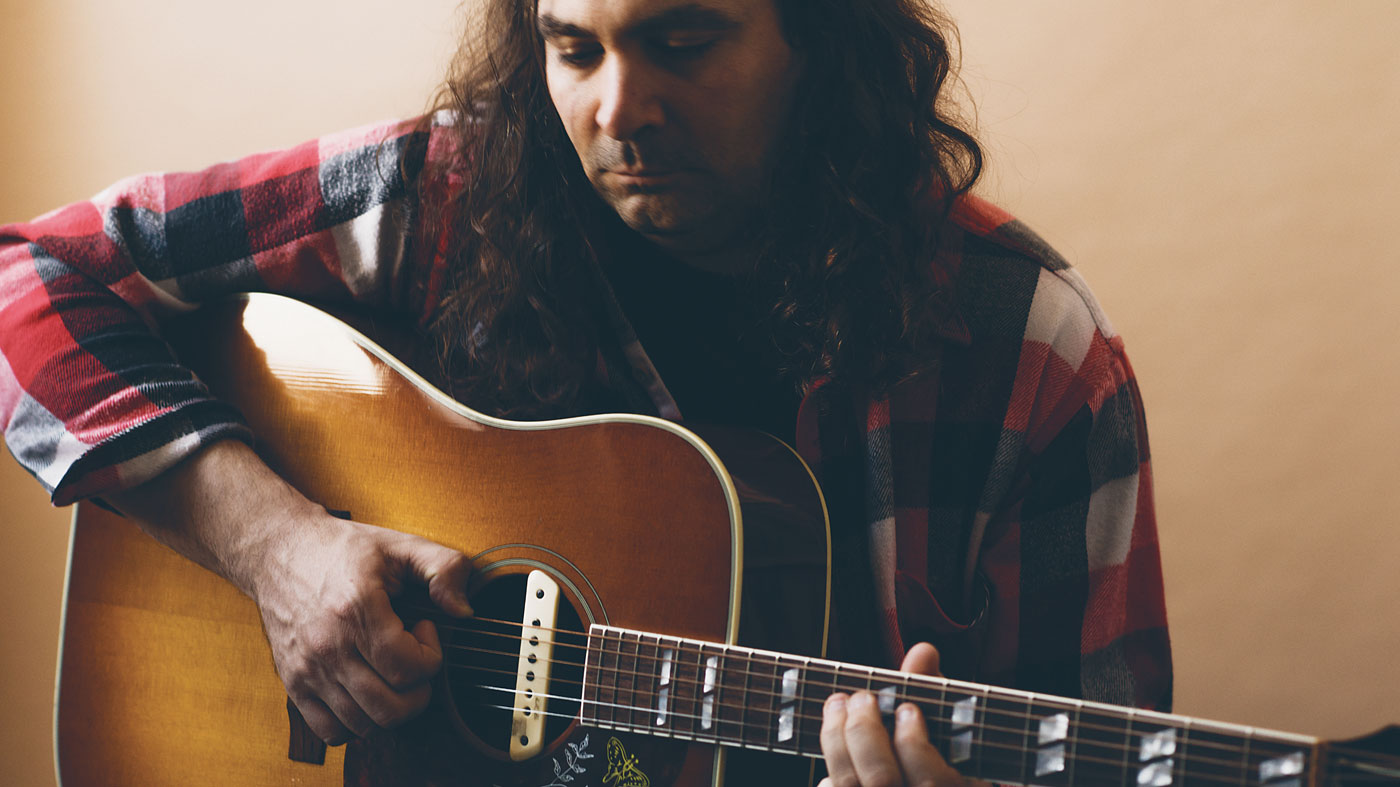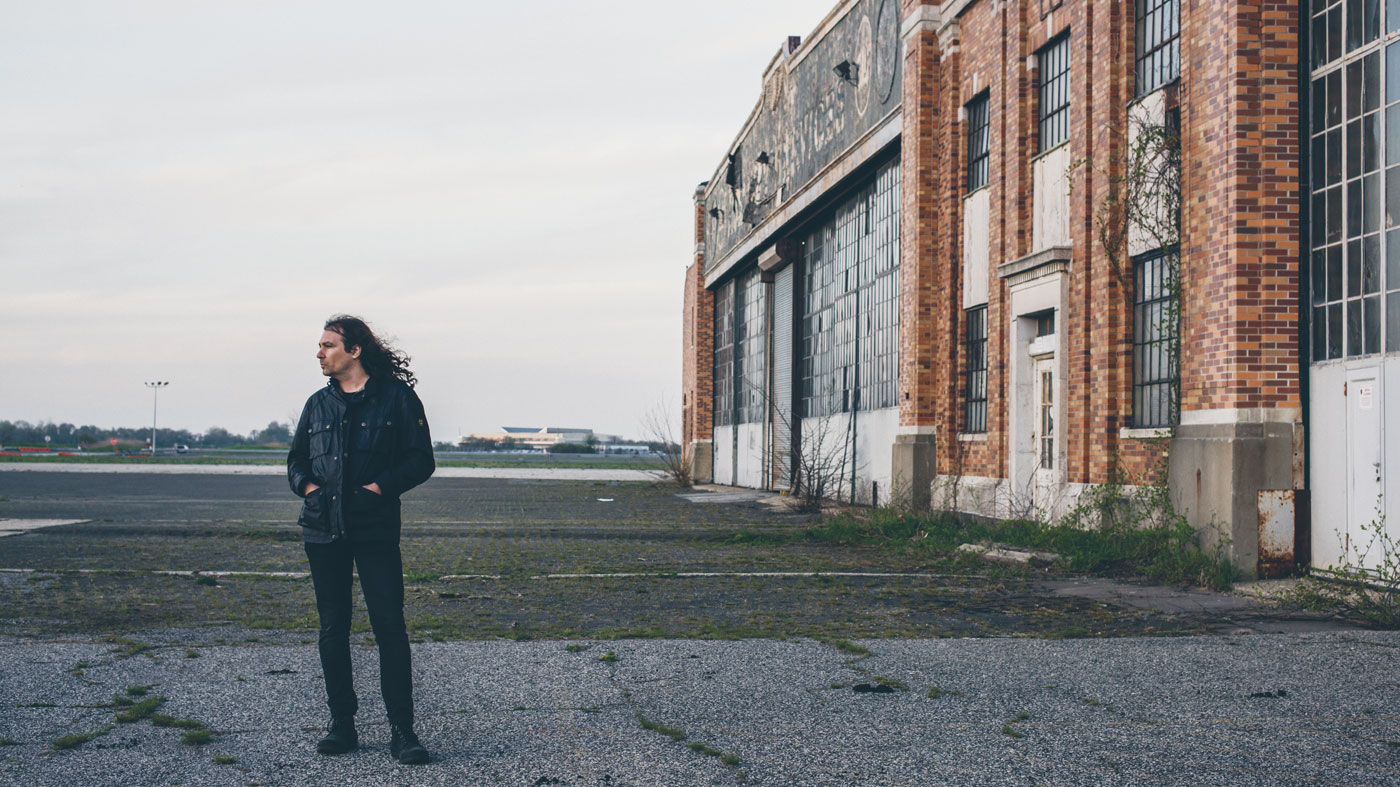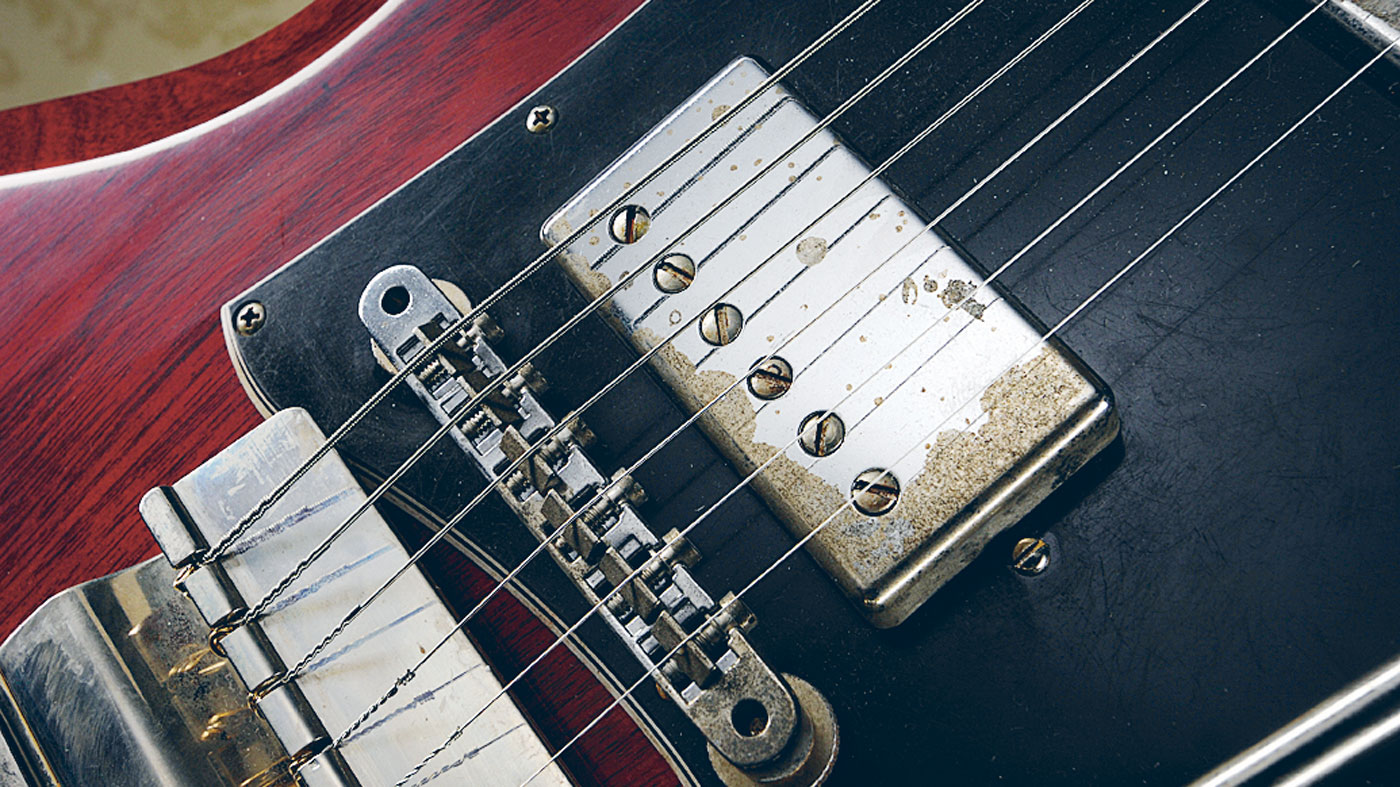The War On Drugs' Adam Granduciel: "Sometimes it’s hard for me to just be the guitar player and lose myself"
The sessions, sounds and gear behind A Deeper Understanding

The musical visionary behind the War On Drugs, Adam Granduciel, talks tone and embracing spontaneity on new album, A Deeper Understanding...
It’s been three years since Philadelphian indie-rockers The War On Drugs released their breakthrough album, Lost In The Dream, and its follow-up, A Deeper Understanding, delivers on the high expectations that awaited its release.
Adam Granduciel’s soaring hook-laden songs and vast-sounding production still manage to absorb the sonic influence of AOR 80s heroes like Springsteen and The Waterboys, as 2014’s opus did before, but this offering ups the ante with a more live feel as well as some intriguingly leftfield tones.
Adam leads a unique sonic world where an array of reverbs, delays and chorus balance seamlessly with beautiful melodic guitar breaks
While multi-instrumentalist Anthony LaMarca contributes some beautiful six-string lines and voicings across the record, it’s Granduciel who once again takes centre stage on the guitar front in the expanded six-piece outfit.
Armed with a bevy of favourite axes, cranked up amps and esoteric pedals, Adam leads us into a unique sonic world where an array of reverbs, delays and chorus balance seamlessly with beautiful melodic guitar breaks and emotive solos.
A Deeper Understanding was laid down in various studios in New York and Los Angeles with recording engineer Shawn Everett (Alabama Shakes, Weezer, John Legend). Granduciel’s production encompasses more of a band approach than The War On Drugs’s previous albums, where Adam tended to work in comparative isolation. Here he gives us an insider’s peek into the process...
What was your musical vision for A Deeper Understanding?
Get the MusicRadar Newsletter
Want all the hottest music and gear news, reviews, deals, features and more, direct to your inbox? Sign up here.
“Well, I knew I wanted to make it like I always have [made our albums] by sketching the songs out in the studio, but then I also wanted it to feel a little bit more like we were onstage playing together. I wanted to get a little bit more spontaneity and more live performances on the record and, at times, things like the bass, drums and the guitar solos were all recorded live.
“In the past, we never really had that kind of spontaneity on record. When you start touring, you play songs in a certain way and then I start to feel like it’s tough to really get lost in my playing. I was happy where I was at before but you almost feel like, ‘Oh, how do I get out of this box?’ I think recording new material and trying to get a spontaneous thing going in the room really helped me end up in places on the guitar that I maybe wouldn’t have got to if I had just played the songs for a year.”
So there was quite a lot of jamming with the whole band during the writing and recording process?
“Yeah, there was a lot of jamming and a good amount of writing through rehearsing together. Sometimes it was a little more layered - like the old way, where I’d start with a drum machine and kind of layer parts and write them on the spot. We just did whatever worked for a certain song.
“The second song Pain, Thinking Of A Place and Holding On were all initially cut live in the room. They were songs where we were in the moment and weren’t really thinking too much about anything. Sometimes, when you just kind of lose yourself in a song, you don’t know until days or weeks later that that take we did was actually really magical.”
A deeper understanding
You cover a plethora of bases from effects-heavy drone soundscapes through to beautifully-crafted lead parts and everything inbetween. From a guitar perspective, do you have any favourite, stand-out moments?
“Some of my proudest moments are just a little bit wilder, you know? I’m thinking of the end of Pain and Thinking Of A Place, the kind of stuff where I wasn’t really overthinking it. I tend to think about so many different things on a recording. I’ll be trying to tune into what the drummer’s doing, trying to keep everyone playing the groove and other things like making sure the piano’s in a nice pocket.
“Sometimes it’s hard for me to just be the guitar player and lose myself. When we’re doing takes, I’ll be treating my guitar as an afterthought like, - ‘Oh, I’ll probably just redo this whole guitar part later on!’ So I’ll just go for it and maybe end up going to places I wouldn’t necessarily try to get to usually: not playing with that fear of hitting a bum note. Those bits can end up being my most special parts because I’m just kind of channelling.”

How do you feel your approach to tone has developed over the years?
“I used to play a lot of acoustic guitar and then, later, I started to play through an amp. In terms of tone and style, I’ve always been influenced by a lot of different players. I love Nick Drake, Mike Bloomfield and Sonic Boom. I like those three a lot!
“As I checked out more music and got more experience through experimenting with different pieces of gear and different guitars - that changed things. I’ve been lucky to get some cool sounds out of lots of different gear over the years. I try to be diligent with my playing and I practise a lot.
“I haven’t really been able to put [the guitar] down since I played for the first time at 12 or 13. Everything’s always developing though. Sometimes, I find that I’m stuck in a box but then it feels like I’ll just get one new trick or one new sequence of notes and that kind of like opens it up for the next couple of years.”
Did any new gear or approaches end up helping to shape A Deeper Understanding?
“When we were making this last record we did a benefit show with Neil Young. For about two years, I’d had one of these new Gretsch White Falcons but it didn’t have the Bigsby on it and I didn’t really think too much about it. When we played this thing with Neil and he had the Bigsby going on his White Falcon, I just thought, ‘Why don’t I have a Bigsby on my White Falcon?’ It just sounded like the most expressive thing ever.
“So I had Fender put a Bigsby on it for me and that was the day before we recorded Thinking Of A Place and Pain. That’s what I used on those recordings. I’d used one before but not on that axe and it was just so fresh. I think I was over-using it, but I was just so excited!
“Another thing was, ‘Oh, I really want to get into feedback’ so there were a few times where I tried to do more of that stuff on my ’66 [Gibson] SG. I think it’s just about always trying to grow.”
Falcon to Hummingbird
Aside from the White Falcon and SG, what other guitars did you bring into play during the sessions?
I played my ’72 Les Paul Deluxe a lot. That’s like my main guitar and I love it
“I played my ’72 Les Paul Deluxe a lot. That’s like my main guitar and I love it. I have this Gibson amp from the 60s with a little 10" speaker and I would just roll all the tone off the Les Paul and put the tremolo on the amp and not use any pedals except maybe a little bit of reverb. Some of those sweet kind of dark, clink-y licks that are always in the background are that Les Paul.
“I have one of those new Jazzmasters that Fender gave me. I love that guitar and I’ve had it for a couple of years. Everyone says, ‘Oh dude, you’ve got to get a vintage!’ but I’m like, ‘Yeah, vintage is good but this gives me a different kind of thing, you know?’ You put it in the middle position and it’s really bright and you can use it in a really cool way.
“With acoustics, my guitar tech lent me his Gibson Hummingbird and I used that a lot on the record and then I also used this white 80s Japanese Squier Strat with the sweet rosewood neck. I used that all over the track Nothing To Find. That real clear chime-y kind of stuff is that guitar, and the SG. I did also use the White Falcon.”
And what other amps did you utilise?
“I used my ’65 [Fender] Super Reverb and then I had my Hiwatt [’74 Custom 50] that I love, and my 70s Fender Vibro Champ. I did use that Gibson amp and this 2x10 Gretsch amp a lot too. If I was using my pedalboard, I would always have a DI going to Shawn [Everett, recording engineer].
“Usually, I was recording with the small amps like the ‘Champ’ or the Gretsch. There was a 60s [Fender] Princeton in my studio too so I’d use that a lot and then I have this really cool 15" Marshall combo with reverb and tremolo. I think they only made a couple of hundred of them in the 70s because they were overheating and were catching fire. That guitar has a really dark sound.”
There’s a droning swathe of ear-catching effects shimmering across the guitars on the album. What are some of your go-to pedals this time around?
I like the Strymon Flint. You can do a lot with that pedal. I’ve used it on synths, guitar, piano and I’ve used it on an auxiliary send

Adam Granduciel on the key to the art of rock star feedback…
“I got into feedback on this record. I was in this particular room in New York and the feedback sounded really good in there. Basically, I bought a ’66 [Gibson] SG four months before I finished the record and that has the original pick-ups on it, not the PAF ones but just the regular Gibson humbuckers from the 60s. Those things feedback unlike any other guitar I own.
“A lot of my guitars have single coil or mini humbuckers but nothing feeds back like these Gibson humbuckers. They’re incredible and that guitar is like a whole new beast. I can do things with that guitar that I can’t do with my Jazzmaster and that just starts to inform the music more because you’re getting a big blast of feedback right before a solo - that’s the fun shit... the rock star shit, you know?”
“I guess my main thing was one of those Roland Chorus Echoes from the 70s. It’s like a tape echo with chorus built in. I plugged straight into that a lot. I also have this incredible homemade fuzz pedal that my friend Jesse [Trbovich], who plays in Kurt Vile and The Violators, built for me. It’s a silicon-based Fuzz Face and I just usually plug the guitar right into that and then into whatever pedal’s next in the chain. That just always has this great thick sound.
“I bought this 70s (or 80s) blue [Electro-Harmonix Deluxe] Memory Man with mono in and mono out and the chorus on it is ridiculously beautiful, so I used that a lot. I also used different tremolo pedals - like the Strymon Flint. You can do a lot with that pedal. I’ve used it on synths, I’ve used it on guitar, I’ve used it on piano and I’ve used it on an auxiliary send.
“I also used my [Electro- Harmonix] Deluxe Electric Mistress for flanger effects. Actually, I don’t really do a lot of overdrive stuff. If I want an overdriven sound, I just turn the amp up and go to the bridge pick-up on my guitar or something.”
The War On Drugs will be hitting the road again in September and coming to UK shores at the beginning of November. Have you figured out your live rig yet for delivering the new songs?
“Well, I usually have about 13 or 14 pedals on my board and today I’m actually driving out to see Bob Bradshaw [Custom Audio Electronics], who’s the guy that builds my boards. We’re going to work out what I’m going to need for this next tour. I think I’m going to use my vintage Super Reverb and my Hiwatt 50-watt head going into a Marshall 2x12 cabinet.
“Last cycle, I had two Fender Twins controlling my Leslie simulator and a couple of other pedals but this time my friend’s building this stereo amp for me, which is going to take those pedals. That set-up just kind of blasts things up at my back and it always sounds really good. It’s essentially like an oversized distortion pedal - if I want a boost, I’ll just turn on that extra amp!”
A Deeper Understanding is out now via Atlantic. The band play two nights each in Glasgow, Manchester and London between 9 and 14 November.
“I’m beyond excited to introduce the next evolution of the MT15”: PRS announces refresh of tube amp lineup with the all-new Archon Classic and a high-gain power-up for the Mark Tremonti lunchbox head
“These guitars travel around the world and they need to be road ready”: Jackson gives Misha Mansoor’s Juggernaut a new lick of paint, an ebony fingerboard and upgrades to stainless steel frets in signature model refresh











